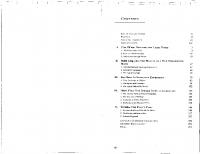Chinese Aesthetics: The Ordering of Literature, the Arts, and the Universe in the Six Dynasties 9780824861841
This singular work presents the most comprehensive and nuanced studies available in any Western language of Chinese aest
270 105 2MB
English Pages 360 [368] Year 2004
Table of contents :
Contents
Acknowledgments
Prologue: A Historical Overview of Six Dynasties Aesthetics
Part I: Images and Representations: Painting, Calligraphy, and Garden Construction
1. Replication and Deception in Calligraphy of the Six Dynasties Period
2. The Essay on Painting by Wang Wei (415–453) in Context
3. Xie He’s “Six Laws” of Painting and Their Indian Parallels
4. A Good Place Need Not Be a Nowhere: The Garden and Utopian Thought in the Six Dynasties
Part II: Words and Patterns: Poetry and Prose
5. The Unmasking of Tao Qian and the Indeterminacy of Interpretation
6. Crossing Boundaries: Transcendents and Aesthetics in the Six Dynasties
7. Literary Games and Religious Practice at the End of the Six Dynasties: The Baguanzhai Poems by Xiao Gang and His Followers
Part III. The Parameters of Six Dynasties Aesthetics: Modes of Discourse
8. Shishuo xinyu and the Emergence of Aesthetic Self- Consciousness in the Chinese Tradition
9. Nature and Higher Ideals in Texts on Calligraphy, Music, and Painting
10. The Conceptual Origins and Aesthetic Significance of “Shen” in Six Dynasties Texts on Literature and Painting
List of Contributors
Index
Contents
Acknowledgments
Prologue: A Historical Overview of Six Dynasties Aesthetics
Part I: Images and Representations: Painting, Calligraphy, and Garden Construction
1. Replication and Deception in Calligraphy of the Six Dynasties Period
2. The Essay on Painting by Wang Wei (415–453) in Context
3. Xie He’s “Six Laws” of Painting and Their Indian Parallels
4. A Good Place Need Not Be a Nowhere: The Garden and Utopian Thought in the Six Dynasties
Part II: Words and Patterns: Poetry and Prose
5. The Unmasking of Tao Qian and the Indeterminacy of Interpretation
6. Crossing Boundaries: Transcendents and Aesthetics in the Six Dynasties
7. Literary Games and Religious Practice at the End of the Six Dynasties: The Baguanzhai Poems by Xiao Gang and His Followers
Part III. The Parameters of Six Dynasties Aesthetics: Modes of Discourse
8. Shishuo xinyu and the Emergence of Aesthetic Self- Consciousness in the Chinese Tradition
9. Nature and Higher Ideals in Texts on Calligraphy, Music, and Painting
10. The Conceptual Origins and Aesthetic Significance of “Shen” in Six Dynasties Texts on Literature and Painting
List of Contributors
Index

- Author / Uploaded
- Zong-qi Cai









